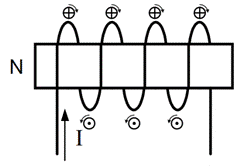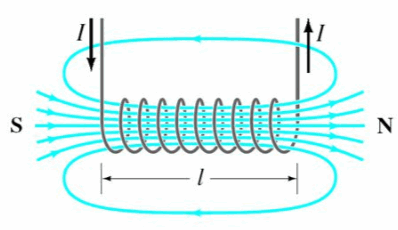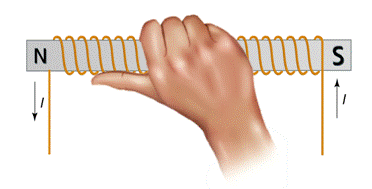


Experiments with magnets and our surroundings
Twelve Fundamentals of Magnetism
3. The Solenoid
a. Links for this topic
b. What is it?
A solenoid is a coil of wire wound around a form (like a cardboard tube from a toilet paper roll), usually in a helical fashion (like the cut of a screw thread), with either a single layer or one layer upon another. All of the wire could also be wound around the form in a haphazard way. It is basically multiple loops of wire, where the end of each loop is connected to the beginning of the next loop.

c. Why is this special?
When current is caused to flow within a solenoid, a magnetic field will appear around and inside the form, looking like the magnetic field around a bar magnet. This would be called a dipole (2 poles, a North magnetic pole at one end and a South magnetic pole at the other end). You can also see how the field around the cross section of each wire loop creates the overall magnetic field, adding to each other. To make this work well, the wires of the solenoid need to be places right next to each other without any gaps.

d. Orientation of the field
How can we predict which end will be the North magnetic pole, and which end will be the South magnetic pole? We can use a RHR again. Wrap the fingers of your right hand around the solenoid in the direction the current is flowing. The thumb of your right hand will show you the direction of the magnetic field through the form, pointing toward the end where the North magnetic pole will be.
